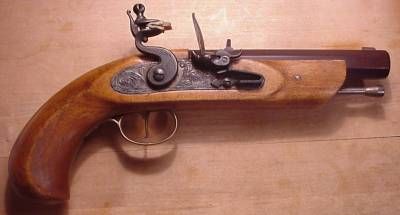Americans have a lasting fascination with guns. The perennially debated Second Amendment has guaranteed citizens of the United States "the right to bear arms" since 1791. And while what, exactly, that means is up for interpretation, the Amendment has never been abolished. There are federal and state laws that control guns in the U.S., however -- even ones the size of an iPod nano.
It wasn't until the 1920s that states began regulating firearms. As states passed gun laws, the federal government did, too. The National Firearms Act of 1934, the Federal Firearms Act of 1938 and the Gun Control Act of 1968 created and codified the restrictions on gun ownership in the United States [source: U.S. Department of Justice].
Advertisement
The relationship between gun laws and the Supreme Court has continued into the 21st century. The nation's capital, Washington, D.C., maintains a law that bans handguns. The law is meant to prevent people from carrying easily concealed weapons. This regulation was challenged by a case before the Supreme Court in March 2008 [source: Washington Post]. But even if the court upholds the local law, it will still be a difficult task to rid the district -- or any city -- fully of handguns.
According to a 2006 Bureau of Alcohol, Tobacco and Firearms report, a total of 3,614,452 handguns, rifles and shotguns were manufactured in the United States that year. Of those, 333,499 were exported outside of the country [source: ATF]. The United States certainly provides a major market for gun manufacturers. In 2005, the U.S. imported 1.84 million guns from overseas for sale -- in addition to those made in America [source: U.S. Census]. As a result, there are more than 200 million guns in the U.S., and the nation has 44 million registered gun owners [source: The Globalist]
But there's one gun that won't likely show up in America. It's been recorded as the smallest gun in the world. While its bullets only travel just over the length of a football field, because of its small size, the gun is illegal to import into the United States [source: Daily Mail].
Find out about the world's smallest gun on the next page.
Advertisement















